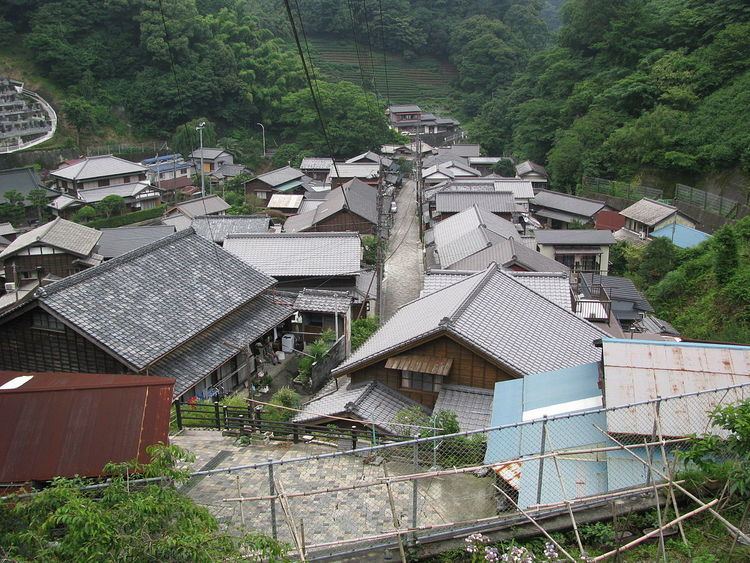Elevation 170 m | ||
 | ||
Location | ||
The Utsunoya-tōge Pass (宇津ノ谷峠, Utsunoya-tōge) is a pass on the old Tōkaidō highway connecting the capital of Edo with Kyoto. Located between former Mariko-juku in what is now Aoi-ku, Shizuoka, and Okabe-juku in what is now Fujieda, it is the only portion of the Heian period road known to have survived to the present day, and was proclaimed a National Historic Site on February 22, 2010.
The route of the ancient Tōkaidō highway skirted the coast of Suruga Bay during the Nara period. However, due to the rugged coastline in the area, the route was shifted inland to the Utsunoya-tōge during the Heian period. Mention of the pass is made frequently in Heian-period waka poetry, with references to the narrow road and the sound of Japanese bush warblers in the area. However, during the 1590 Battle of Odawara, Toyotomi Hideyoshi ordered the route of the Tōkaidō to be shifted slightly to its present course, which offered less of a bottleneck to his armies. The Edo period Tōkaidō followed this new route, and the Heian period pathway was forgotten until rediscovered in 1965.
During the Meiji period, a modern tunnel was dug under the Utsunoya-tōge. Completed in 1876, it was the first tunnel in Japan to charge a toll for passage. The tunnel was in use until closed by a fire 1896, but was reopened from 1904-1930. Made obsolete by automobiles, the original tunnel was replaced in 1930 by a larger tunnel, and a second tunnel was added in 1959. The 1930 tunnel is used by Shizuoka Prefectural Road 208, and the 1959 tunnel by Japan National Route 1.
Due to ever increasing traffic, the Heisei Utsunoya-tōge Tunnel was completed in 1990 on the Okabe Bypass of Japan National Route 1.
